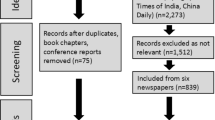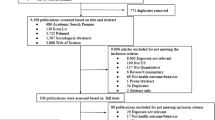Abstract
Hurricanes are costly natural disasters periodically faced by households in coastal and to some extent, inland areas. A detailed understanding of evacuation behavior is fundamental to the development of efficient emergency plans. Once a household decides to evacuate, a key behavioral issue is the time at which individuals depart to reach their destination. An accurate estimation of evacuation departure time is useful to predict evacuation demand over time and develop effective evacuation strategies. In addition, the time it takes for evacuees to reach their preferred destinations is important. A holistic understanding of the factors that affect travel time is useful to emergency officials in controlling road traffic and helps in preventing adverse conditions like traffic jams. Past studies suggest that departure time and travel time can be related. Hence, an important question arises whether there is an interdependence between evacuation departure time and travel time? Does departing close to the landfall increases the possibility of traveling short distances? Are people more likely to depart early when destined to longer distances? In this study, we present a model to jointly estimate departure and travel times during hurricane evacuations. Empirical results underscore the importance of accommodating an inter-relationship among these dimensions of evacuation behavior. This paper also attempts to empirically investigate the influence of social ties of individuals on joint estimation of evacuation departure and travel times. Survey data from Hurricane Sandy is used for computing empirical results. Results indicate significant role of social networks in addition to other key factors on evacuation departure and travel times during hurricanes.


Similar content being viewed by others
References
Agresti, A., Agresti, B.F.: Statistical analysis of qualitative variation. Sociol. Methodol. 9, 204–237 (1978)
Baker, E.J.: Predicting response to hurricane warnings: a reanalysis of data from four studies. Mass. Emerg. 4(1), 9–24 (1979)
Baker, E.J.: Hurricane evacuation behavior. Int. J. Mass. Emerg. Disasters 9(2), 287–310 (1991)
Baker, E.J.: Hurricane evacuation in the United States. Storms 1, 306–319 (2000)
Bertsekas, D.P., Tsitsiklis, J.N.: Introduction to Probability, vol. 1. Athena Scientific, Belmont (2002)
Bhat, C.R.: A model of post home-arrival activity participation behavior. Transp. Res. Part B Methodol. 32(6), 387–400 (1998)
Blake, E.S., Kimberlain, T.B., Berg, R.J., Cangialosi, J.P., Beven Ii, J.L.: Tropical cyclone report: Hurricane Sandy. Natl. Hurric. Center 12, 1–10 (2013)
Bytheway, B.: The evacuation of older people: the case of hurricane Katrina. In: Annual Conference of the Royal Geographical Society and Institute of British Geographers, London, vol. 7, p. 2012. http://understandingkatrina.ssrc.org/Bytheway. Accessed April 2012
Cheng, G., Wilmot, C.G., Baker, E.J.: A destination choice model for hurricane evacuation. In: Proceedings of the 87th Annual Meeting Transportation Research Board, Washington, DC, USA, pp. 13–17 (2008)
Coleman, T., Branch, M.A., Grace, A.: Optimization Toolbox. For Use with MATLAB Users Guide for MATLAB 5, Version 2, Release II (1999)
Dalziell, E., Nicholson, A.: Risk and impact of natural hazards on a road network. J. Transp. Eng. 127(2), 159–166 (2001)
Dash, N., Gladwin, H.: Evacuation decision making and behavioral responses: individual and household. Nat. Hazards Rev. 8(3), 69–77 (2007)
Dixit, V., Pande, A., Radwan, E., Abdel-Aty, M.: Understanding the impact of a recent hurricane on mobilization time during a subsequent hurricane. Transp. Res. Rec. J. Transp. Res. Board 2041, 49–57 (2008)
Dixit, V., Wilmot, C., Wolshon, B.: Modeling risk attitudes in evacuation departure choices. Transp. Res. Rec. J. Transp. Res. Board 2312, 159–163 (2012)
Dow, K., Cutter, S.L.: Emerging hurricane evacuation issues: hurricane Floyd and South Carolina. Nat. Hazards Rev. 3(1), 12–18 (2002)
Drabek, T.E.: Disaster responses within the tourist industry. Int. J. Mass Emerg. Disasters 13(1), 7–23 (1995)
Drabek, T.E., Boggs, K.S.: Families in disaster: reactions and relatives. J. Marriage Family, 30, 443–451 (1968)
Grajczyk, A., Zöllner, O.: How older people watch television. Gerontology 44(3), 176–181 (1998)
Habib, K.M.N., Day, N., Miller, E.J.: An investigation of commuting trip timing and mode choice in the Greater Toronto area: application of a joint discrete-continuous model. Transp. Res. Part A Policy Pract. 43(7), 639–653 (2009)
Halgin, D.S., Borgatti, S.P.: An introduction to personal network analysis and tie churn statistics using E-NET. Connections 32(1), 37–48 (2012)
Halverson, J.B., Rabenhorst, T.: Hurricane Sandy: the science and impacts of a superstorm. Weatherwise 66(2), 14–23 (2013)
Hasan, S., Ukkusuri, S.V.: A threshold model of social contagion process for evacuation decision making. Transp. Res. Part B Methodol. 45(10), 1590–1605 (2011)
Hasan, S., Ukkusuri, S., Gladwin, H., Murray-Tuite, P.: Behavioral model to understand household-level hurricane evacuation decision making. J. Transp. Eng. 137(5), 341–348 (2010)
Hasan, S., Mesa-Arango, R., Ukkusuri, S.: A random-parameter hazard-based model to understand household evacuation timing behavior. Transp. Res. Part C Emerg. Technol. 27, 108–116 (2013)
Huang, S.K., Lindell, M.K., Prater, C.S., Wu, H.C., Siebeneck, L.K.: Household evacuation decision making in response to Hurricane Ike. Nat. Hazards Rev. 13(4), 283–296 (2012)
Huang, S.K., Lindell, M.K., Prater, C.S.: Multistage model of hurricane evacuation decision: empirical study of hurricanes Katrina and Rita. Nat. Hazards Rev. 18(3), 05016,008 (2016a)
Huang, S.K., Lindell, M.K., Prater, C.S.: Who leaves and who stays? A review and statistical meta-analysis of hurricane evacuation studies. Environ. Behav. 48(8), 991–1029 (2016b)
Johnson, M.E.: Multivariate Statistical Simulation: A Guide to Selecting and Generating Continuous Multivariate Distributions. Wiley, New York (2013)
Kaplan, A.M., Haenlein, M.: Users of the world, unite! The challenges and opportunities of social media. Bus. Horiz. 53(1), 59–68 (2010)
King, G.: Unifying Political Methodology: The Likelihood Theory of Statistical Inference. University of Michigan Press, Ann Arbor (1998)
Lee, L.F.: Generalized econometric models with selectivity. Econ. J. Econ. Soc. 51, 507–512 (1983)
Lee, B., Timmermans, H.J.: A latent class accelerated hazard model of activity episode durations. Transp. Res. Part B Methodol. 41(4), 426–447 (2007)
Lindell, M.K., Prater, C.S.: Critical behavioral assumptions in evacuation time estimate analysis for private vehicles: examples from hurricane research and planning. J. Urban Plan. Dev. 133(1), 18–29 (2007)
Lindell, M.K., Lu, J.C., Prater, C.S.: Household decision making and evacuation in response to Hurricane Lili. Nat. Hazards Rev. 6(4), 171–179 (2005)
Lindell, M.K., Kang, J.E., Prater, C.S.: The logistics of household hurricane evacuation. Nat. Hazards 58(3), 1093–1109 (2011)
Merchant, D.K., Nemhauser, G.L.: A model and an algorithm for the dynamic traffic assignment problems. Transp. Sci. 12(3), 183–199 (1978)
Mesa-Arango, R., Hasan, S., Ukkusuri, S.V., Murray-Tuite, P.: Household-level model for hurricane evacuation destination type choice using hurricane Ivan data. Nat. Hazards Rev. 14(1), 11–20 (2012)
Murray-Tuite, P., Wolshon, B.: Evacuation transportation modeling: an overview of research, development, and practice. Transp. Res. Part C Emerg. Technol. 27, 25–45 (2013)
Murray-Tuite, P., Yin, W., Ukkusuri, S., Gladwin, H.: Changes in evacuation decisions between Hurricanes Ivan and Katrina. Transp. Res. Rec. J. Transp. Res. Board 2312, 98–107 (2012)
News, N.: Houston Officials Defend Not Ordering Hurricane Harvey Evacuation nbc news. https://www.nbcnews.com/storyline/hurricane-harvey/houston-officials-defend-not-ordering-hurricane-harvey-evacuation-n796561. Accessed 11 May 2010 (2017)
Ng, M., Diaz, R., Behr, J.: Departure time choice behavior for hurricane evacuation planning: the case of the understudied medically fragile population. Transp. Res. Part E Logist. Transp. Rev. 77, 215–226 (2015)
Noland, R.B., Polak, J.W.: Travel time variability: a review of theoretical and empirical issues. Transp. Rev. 22(1), 39–54 (2002)
Páez, A., Habib, K.M.N., Bonin, J.: A joint ordinal-continuous model for episode generation and duration analysis. In: 88th Transportation Research Board Annual Meeting, Washington, DC, vol. 1115 (2009)
Pel, A.J., Bliemer, M.C., Hoogendoorn, S.P.: A review on travel behaviour modelling in dynamic traffic simulation models for evacuations. Transportation 39(1), 97–123 (2012)
Perry, R.W., Greene, M.R.: Citizen Response to Volcanic Eruptions: The Case of Mt. St Helens Irvington, New York (1983)
Perry, R.W., Lindell, M.K., Greene, M.R.: Evacuation Planning in Emergency Management. LexingtonBooks, Toronto (1981)
Sadri, A.M., Ukkusuri, S.V., Murray-Tuite, P.: A random parameter ordered probit model to understand the mobilization time during hurricane evacuation. Transp. Res. Part C Emerg. Technol. 32, 21–30 (2013a)
Sadri, A.M., Ukkusuri, S.V., Murray-Tuite, P., Gladwin, H.: How to evacuate: model for understanding the routing strategies during hurricane evacuation. J. Transp. Eng. 140(1), 61–69 (2013b)
Sadri, A.M., Ukkusuri, S.V., Murray-Tuite, P., Gladwin, H.: Analysis of hurricane evacuee mode choice behavior. Transp. Res. Part C Emerg. Technol. 48, 37–46 (2014)
Sadri, A.M., Ukkusuri, S.V., Murray-Tuite, P., Gladwin, H.: Hurricane evacuation route choice of major bridges in Miami Beach, Florida. Transp. Res. Rec. J Transp. Res. Board 2532, 164–173 (2015)
Sadri, A.M., Ukkusuri, S.V., Gladwin, H.: Modeling joint evacuation decisions in social networks: the case of Hurricane Sandy. J. Choice Model. 25, 50–60 (2017a)
Sadri, A.M., Ukkusuri, S.V., Gladwin, H.: The role of social networks and information sources on hurricane evacuation decision making. Nat. Hazards Rev. 18(3), 04017,005 (2017b)
Sadri, A.M., Ukkusuri, S.V., Lee, S., Clawson, R., Aldrich, D., Nelson, M.S., Seipel, J., Kelly, D.: The role of social capital, personal networks, and emergency responders in post-disaster recovery and resilience: a study of rural communities in Indiana. Nat. Hazards 90, 1–30 (2017c)
Sorensen, J.H.: When shall we leave? Factors affecting the timing of evacuation departures. Int. J. Mass Emerg. Disasters 9(2), 153–165 (1991)
Train, K.: Qualitative Choice Analysis: Theory, Econometrics, and an Application to Automobile Demand, vol. 10. MIT Press, Cambridge (1986)
Ukkusuri, S.V., Han, L., Doan, K.: Dynamic user equilibrium with a path based cell transmission model for general traffic networks. Transp. Res. Part B Methodol. 46(10), 1657–1684 (2012)
Washington, S.P., Karlaftis, M.G., Mannering, F.: Statistical and Econometric Methods for Transportation Data Analysis. CRC Press, Boca Raton (2010)
Wolshon, B.: Planning for the evacuation of new orleans. Inst. Transp. Eng. ITE J. 72(2), 44 (2002)
Wu, H.C., Lindell, M.K., Prater, C.S.: Logistics of hurricane evacuation in Hurricanes Katrina and Rita. Transp. Res. Part F Traffic Psychol. Behav. 15(4), 445–461 (2012)
Wu, H., Lindell, M., Prater, C., Huang, S.: Logistics of hurricane evacuation in Hurricane Ike. In: Logistics: Perspectives, Approaches and Challenges Nova. Science Hauppauge, pp. 127–140 (2013)
Yin, W., Murray-Tuite, P., Ukkusuri, S.V., Gladwin, H.: An agent-based modeling system for travel demand simulation for hurricane evacuation. Transp. Res. Part C Emerg. Technol. 42, 44–59 (2014)
Acknowledgements
The authors are grateful to National Science Foundation for the Grant CMMI-1131503 to support the research presented in this paper. A number of questions used for the survey questionnaire were derived from earlier research on the Hurricane Sandy evacuation done by Dr. Hugh Gladwin and Dr. Betty Morrow supported by National Science Foundation Grants CMMI-1322088 and CMMI-1520338. The survey was conducted by Dr. Hugh Gladwin of Florida International University. However, the authors are solely responsible for the findings presented in this study.
Author information
Authors and Affiliations
Contributions
All the authors have contributed to the design of the study, conduct of the research, and writing the manuscript. All authors gave final approval for publication.
Corresponding author
Ethics declarations
Competing financial interests
The authors declare that they have no competing financial interests.
Rights and permissions
About this article
Cite this article
Gehlot, H., Sadri, A.M. & Ukkusuri, S.V. Joint modeling of evacuation departure and travel times in hurricanes. Transportation 46, 2419–2440 (2019). https://doi.org/10.1007/s11116-018-9958-4
Published:
Issue Date:
DOI: https://doi.org/10.1007/s11116-018-9958-4




